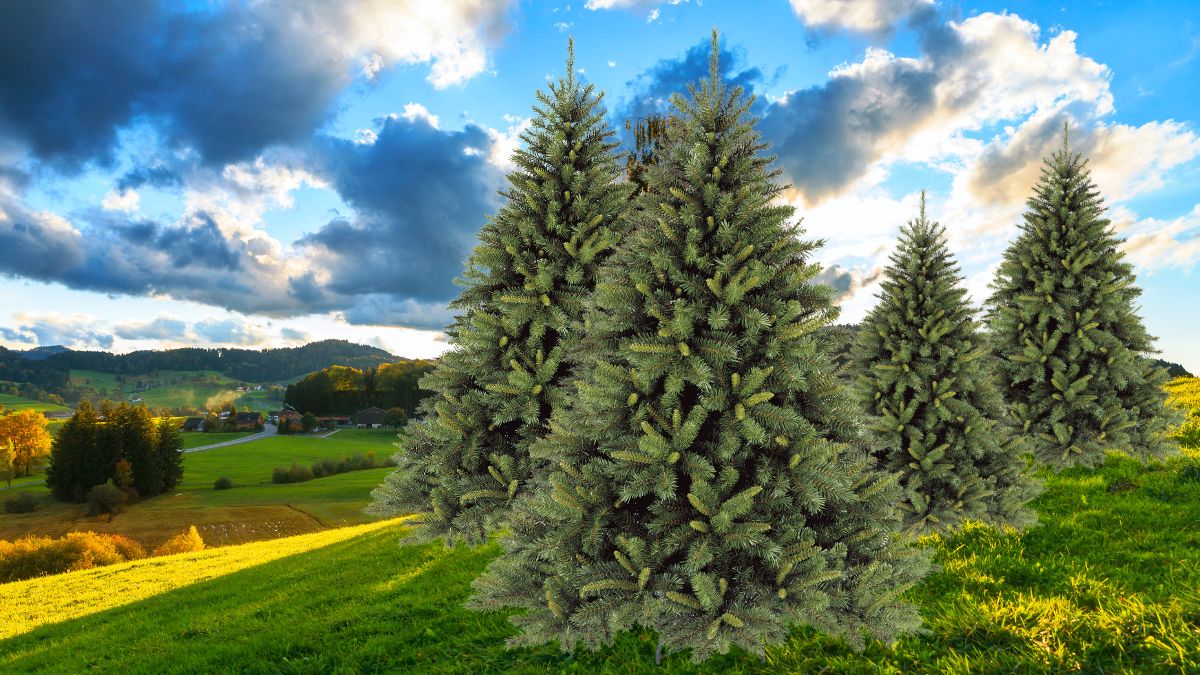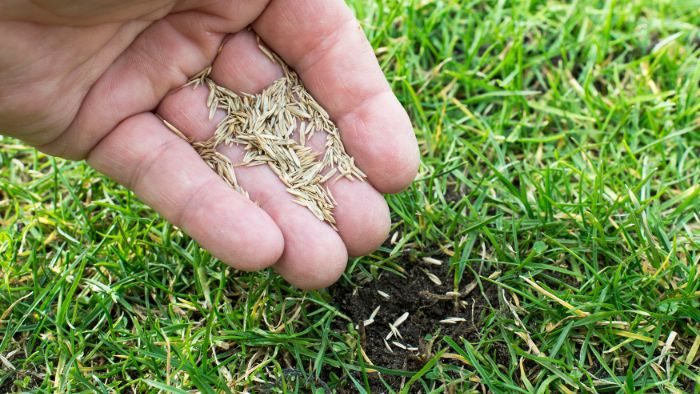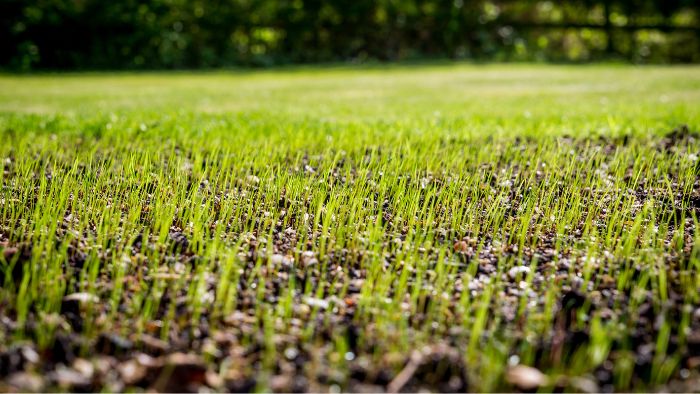Last Updated on November 16, 2022 by Guillermina
Would you like to know How to Grow Grass Under a Pine Tree? Well, in that case, we have some great information to make your endeavor successful. If you’ve ever attempted to cultivate it under these trees, you may have been dissatisfied with the lack of success. This is especially because grass does not actually like being planted under pines.
This is due to the fact that the soil in this area is too acidic and there is a limited amount of sunlight that reaches any vegetation that is planted there. Additionally, there is also competition when it comes to water uptake. This is because both grass and pine trees are big drinkers, igniting a fierce rivalry for water in the vicinity.
Keep in mind that the pine needles fall directly to the ground, forming a thick layer that reduces the amount of light that reaches the grass. Due to these factors, many landscaping experts advise against placing any kind of grass under pine trees. However, if you’re determined to succeed, there are several strategies that you can implement to grow your lawn. Learn how it can all be easily done below!
What Grass Seed Grows Best Under Pine Trees?
To begin, the issues which include acidic soil, insufficient water, sunlight, and the accumulation of pine needles must be addressed before planting grass under this tree. Knowing how to grow grass under a pine tree is important; however, which type would thrive in this region? While some plants can withstand the unfavorable conditions found beneath these trees, others may not.
This is especially because of the amount of shade underneath and the soil pH. To balance the pH of the soil, it is best to treat it with lime a year before planting. Make sure to give your lawn the right amount of room to spread out. Selecting the right seeds to grow alongside your pine tree is also vital as this will avoid some of the frustration and common problems.
In our opinion, establishing centipede or Zoysia grass under these trees is best. This is because these grass types thrive in acidic soils. St. Augustine grass on the other hand grows best in the shade, which is abundantly available under these pine trees. However, ensure that you test and amend the soil accordingly, as this grass type prefers a neutral pH. Utilizing mulch or pine straws is also recommended.
How do you Grow Grass Under a Spruce Tree?
It takes regular attention to successfully grow grass in the shade of spruce trees. The pH of the soil will need to be balanced over several applications of lime, which could take one to two years to complete. In addition to blocking sunlight, dead needles are what cause the soil to become acidic. For this reason, it’s crucial to keep the region clear of them.
Consider giving your lawn more water to make up for the competition from tree roots. Aside from the information about how to grow grass under a pine tree, are you aware of the differences between spruce and pine trees? While the former connect their needles separately, the latter attach them in clusters to the branches.
Here Are A Few Tips About Growing Grass Under A Spruce Or Pine Tree:
1. When growing grass or any plant under spruce trees, you should clear the area of trash and needles. This will allow sunlight and moisture to effectively reach the soil and grass that is planted there.
2. Till the ground, ideally to a depth of about four to six inches. Keep in mind that you should only go as far as the tree roots will allow without damaging them.
3. The pH of the soil should be between 5.0 and 6.5. for most grasses to thrive. So test the soil and add lime as necessary to reduce acidity.
4. All tree limbs below 10 feet should be cut off, and above limbs should be pruned or thinned to maximize solar exposure.
5. In the southern zone, you can also try zoysia, Bermuda, and centipede grasses. Fescue seed is also good because it tolerates shade.
6. Ensure that you add mulch and that you extend the bed to the tree’s drip line. Landscape rock also works well but requires more frequent raking because it doesn’t blend in with the pine needles as well as mulch.
Will Grass Grow in Pine Needles?
It’s a frequent concern that grass won’t grow near pine trees. This is because the accumulating needles are acidic and some believe that they won’t support any plant life. Keep in mind that pine needles usually have a pH between 3.0 and 4.0 when they fall from the tree. However, they have very less impact on negative grass growth. You should also be aware that different plants prefer to grow in various soil types and pH values.
Although an acidic growing medium is ideal for growing pine trees, it may not be suitable for the type of grass you are planting. Although some reports indicate that grass development is hampered by the soil acidity level created by pine needles, this is not entirely true. You would be glad to know that while pine needles are acidic on their own, they do not disperse the acid into the soil or other materials.
Take Heed of the Points Below:
– Pine trees in the forest receive little sunlight and are subject to heavy precipitation.
– Microorganisms and other life degrade very slowly in the soil beneath trees.
– The topsoil is acidic because of increased precipitation and a sluggish breakdown rate, not because of its needles.
– The top organic material becomes acidic as a result of the water slowly penetrating the lower layers of the soil and releasing acid components.
– In a positive light, the layers of your pine needles strewn on the ground actually protect your grass from excessive sun exposure. They can also be used as mulch for other garden plants.
– Even though trees with evergreen foliage complement the grass below nicely, carefully consider the aforementioned advice to create a healthy yard.
What to put Under Evergreen Trees?
People that have a lot of evergreen trees in their landscape could have trouble growing an attractive lawn or plant underneath them. This is especially true if they are misled by negative reports or don’t know how to grow grass under a pine tree. If you diligently follow good advice and techniques for repurposing the area beneath your evergreens, then you should not face any hassles.
Consider the points below before you decide what to put under evergreen trees:
- Before putting anything under your evergreen tree, first, remove any excess debris to allow moisture and sunlight to reach the soil.
- As we previously mentioned, the soil beneath your evergreen trees is usually quite acidic. You should test it and add lime as necessary to raise the pH level according to your intended planting preference.
- To improve any available sunlight coming through, you should also prune the thinner upper branches and eliminate some of the lower tree limbs.
- You can choose from a variety of grasses, flowers, and other plants that would fo well under your evergreens.
- You should also consider the best possibilities for that region because some plants won’t be able to adapt to the challenging conditions under evergreen trees.
- Give your soil about a year to adjust the pH before planting anything for the greatest results.
- Azaleas, Woodland Sunflowers, Lily of the Valley, and Ivory Sedge are a few plants that can survive under evergreen trees.
These suggestions will make sure that planting whatever you choose to grow beneath your evergreen trees is a little bit simpler. Here are more gardening tips and tricks about grass and pine trees in this short video.
Conclusion
Although pine trees have a large shaded area that minimizes sunlight and rain from adequately reaching the soil’s surface, it is not impossible to enjoy a thriving lawn or garden when planted there. Given the size of pine trees, it is evident that their branches protect the ground from the sun and rain.
In the same way, it also provides a great atmosphere for plants that thrive in partially shaded areas. However, keep in mind that if not properly done, it has the capability to impede the plant’s growth. This is because without sunlight and water, photosynthesis which is the process by which plants produce their food, cannot take place.
The grass may also be further protected from the sun by the fallen pine needles which can have both positive and negative results if neglected for extended periods. For this reason, occasional raking is advised. Remember that knowing how to grow grass under a pine tree is advantageous. Implementing this knowledge diligently will make the process of absorbing water and nutrients from the soil much easier for your grass. Click on the link for information about managing pine trees for bahiagrass for timber and cattle production.



